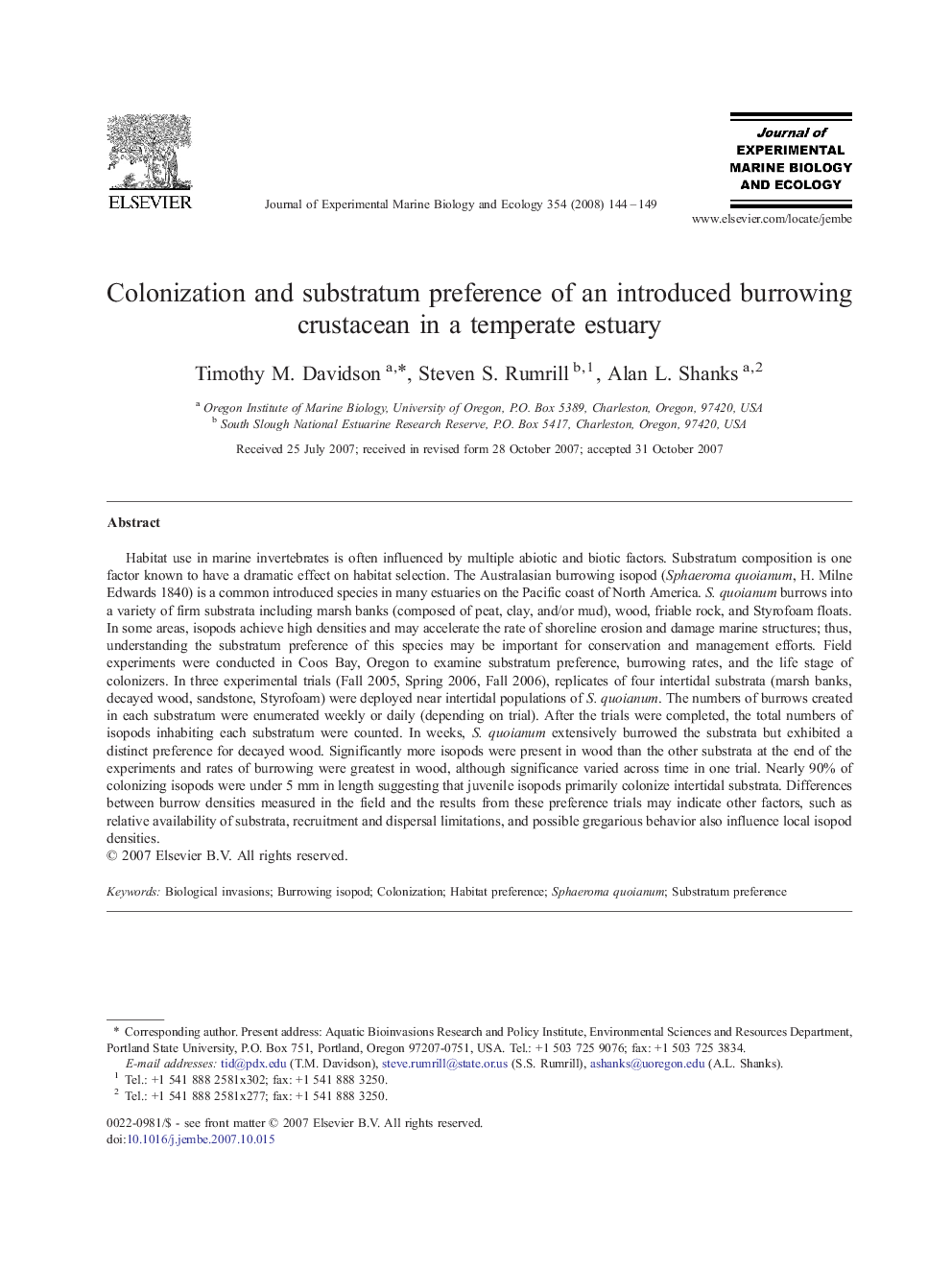| کد مقاله | کد نشریه | سال انتشار | مقاله انگلیسی | نسخه تمام متن |
|---|---|---|---|---|
| 4397378 | 1305883 | 2008 | 6 صفحه PDF | دانلود رایگان |

Habitat use in marine invertebrates is often influenced by multiple abiotic and biotic factors. Substratum composition is one factor known to have a dramatic effect on habitat selection. The Australasian burrowing isopod (Sphaeroma quoianum, H. Milne Edwards 1840) is a common introduced species in many estuaries on the Pacific coast of North America. S. quoianum burrows into a variety of firm substrata including marsh banks (composed of peat, clay, and/or mud), wood, friable rock, and Styrofoam floats. In some areas, isopods achieve high densities and may accelerate the rate of shoreline erosion and damage marine structures; thus, understanding the substratum preference of this species may be important for conservation and management efforts. Field experiments were conducted in Coos Bay, Oregon to examine substratum preference, burrowing rates, and the life stage of colonizers. In three experimental trials (Fall 2005, Spring 2006, Fall 2006), replicates of four intertidal substrata (marsh banks, decayed wood, sandstone, Styrofoam) were deployed near intertidal populations of S. quoianum. The numbers of burrows created in each substratum were enumerated weekly or daily (depending on trial). After the trials were completed, the total numbers of isopods inhabiting each substratum were counted. In weeks, S. quoianum extensively burrowed the substrata but exhibited a distinct preference for decayed wood. Significantly more isopods were present in wood than the other substrata at the end of the experiments and rates of burrowing were greatest in wood, although significance varied across time in one trial. Nearly 90% of colonizing isopods were under 5 mm in length suggesting that juvenile isopods primarily colonize intertidal substrata. Differences between burrow densities measured in the field and the results from these preference trials may indicate other factors, such as relative availability of substrata, recruitment and dispersal limitations, and possible gregarious behavior also influence local isopod densities.
Journal: Journal of Experimental Marine Biology and Ecology - Volume 354, Issue 1, 4 January 2008, Pages 144–149